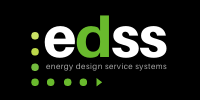Retro-Commissioning
What is Retro-Commissioning (RCx)?
Retro-Commissioning is the process of evaluating an existing building to ensure that the building components are still calibrated properly and used as designed; with all building systems operating as intended and at maximum efficiency. Since RetroCommissioning does not have to mean upgrading or replacing equipment, but rather tuning-up your existing equipment for more efficient performance, the process can provide commercial facilities with lower energy usage, operating costs, reduced maintenance, and improved comfort and productivity—without making large capital investments. The retrocommissioning process is based on the building type and current usage, especially if the current usage differs from the initial design usage. This attention to original design purpose and current occupancy patterns sets retrocommissioning apart from other audit procedures.
Why building inefficiencies occur
Over time buildings are used for purposes other than originally intended. Even if such controls were formally commissioned when the building was constructed, spaces will be used in a manner other than as originally designed:
- Personnel densities are shifted from one space to another
- Equipment (plug loads) will be added or removed
- Hardware will drift or fail
- Operators will modify temperature control sequences to the best of their abilities
After an initial evaluation, defective equipment is repaired and/or calibrated. With residential projects, the architectural components of the building play the largest role. In commercial projects, HVAC and lighting systems tend to be the larger areas of focus.
Benefits of Retro-Commissioning:
- Optimizing chiller and boiler operations to better match building load conditions
- Reducing ventilation in over-ventilated areas
- Fixing ventilation dampers that are open when they should be closed, or vice versa
- System rebalancing and decreasing supply air pressure set-point
- Reducing supply air temperature and fan speed in air handling units
- Aligning zone temperature set-points to match the building’s occupancy patterns
- Operating equipment only when building is occupied or when equipment is needed
- Reduced equipment maintenance & operating costs
- Extended equipment service life
- Improved integration of building systems
- Updated component training materials
An efficient lighting retrofit can reduce the heat load in spaces dramatically. By rebalancing airflows and/or modifying temperature control sequences, the energy savings from the lighting retrofit can sometimes be doubled.
Benefits of Retro-Commissioning:
- Increased occupant comfort and productivity
- Energy savings
- Raised asset value
- Greater efficiency of building components
The RCx Process
Assessment: A detailed assessment and analysis of your building is done and summarized in a report. The report will provide you with a list of low cost energy efficiency improvements recommended for your building as well as payback periods.
Implementation: You choose which recommendations you wish to follow out of the report. Upon completion of the improvements, another assessment will be done to confirm the energy savings and put into a final report verifying the completion improvements and the estimated energy savings.
DTE Energy Retro-Commissioning (RCx) Program
Energy Design Service Systems has been selected as a service provider to offer a fully-funded study for DTE Energy customers through the DTE Energy Retro-Commissioning Program. EDSS will conduct a detailed energy assessment to investigate and identify low-cost energy-saving operation improvements through a systematic evaluation of mechanical and electrical systems. With the entire study being fully-funded by DTE Energy, your commitment will be to pay the cost of implementing improvements that pay for themselves in 18 months or less.
Resources:
Let's check your building.
Request a Retro-Commissioning assessment from Energy Design Service Systems.
